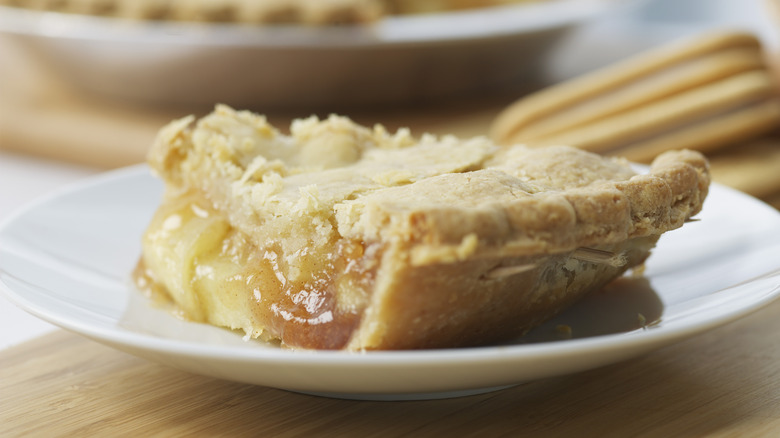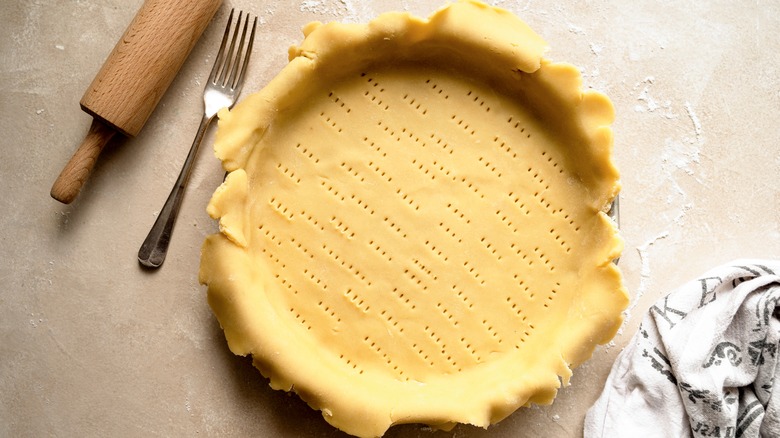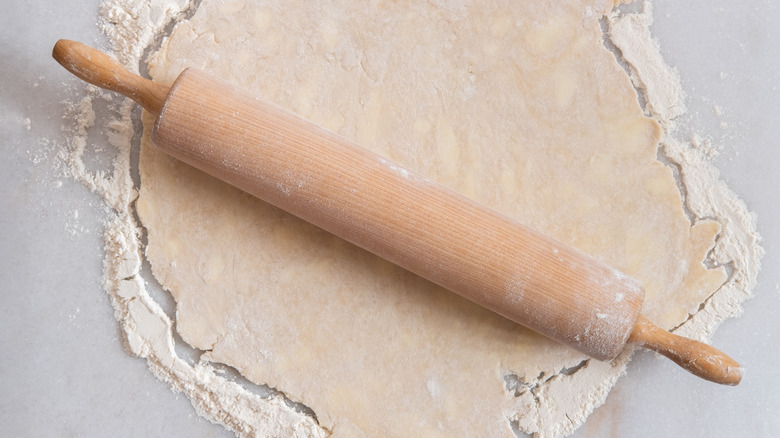How Cream Cheese Can Take Pie Crust From Good To Great
Some pie doughs call for shortening, while others use butter, and many even call for adding a splash of vodka to their crust. The ingredients often vary, but one thing is always emphasized no matter the recipe: don't overmix the dough. Instead, you'll get better results if you work the butter into the flour with your hands or with a pastry cutter. But is this really the case? The answer lies in the formation of gluten.
Gluten is a necessary component of many baked goods since it provides structure, but too much of it can easily make things tough. The more you knead or mix your dough, the more gluten forms. If it's a pie crust you're making, you'll end up with a dense final product rather than one that's light and flaky. The best way to prevent gluten from forming is to simply avoid overworking the dough, however, if you end up undermixing it, your pie crust will turn out crumbly. A more foolproof approach, therefore, is to add cream cheese.
What happens when you add cream cheese to pie dough?
Whether you're using butter, shortening, or lard, fat directly influences the texture of pie crust. Most people are aware that flakiness is a result of the fat creating pockets of steam in the dough as it cooks, but there's something else that happens as well. Fat also acts as a barrier between the flour and the liquid, thereby inhibiting the formation of gluten. Any fat can accomplish this, but as it turns out, cream cheese might be the most effective and flavorful option.
While butter has milk solids, cream cheese actually has cream, and that means that in addition to disrupting gluten formation, it also tenderizes the dough. Butter-based pie crust also tends to shrink in the oven, whereas one that's cream cheese-based will hold its shape. Furthermore, cream cheese also gives pie crust a distinct flavor that's impossible to achieve from butter or shortening.
How much cream cheese should you add to your pie dough?
You might assume that the more cream cheese you add to your pie dough the flakier it will be, but the opposite is true. In addition to being a source of fat, cream cheese is also a source of moisture. Therefore if you add more cream cheese to your pie dough, you're also adding more moisture. With too much moisture, the dough will be too sticky to handle, and even if you do manage to roll it out, it'll still bake into a soggy crust, which is no better than a dry, tough one.
For best results, don't go overboard with the cream cheese. You can either substitute it for the water in your recipe or swap half the amount of butter for cream cheese. That's what Martha Stewart recommends, noting that this particular dough makes a good base for pecan pie. Just make sure to use full-fat cream cheese so it can properly inhibit gluten development without adding too much moisture.


